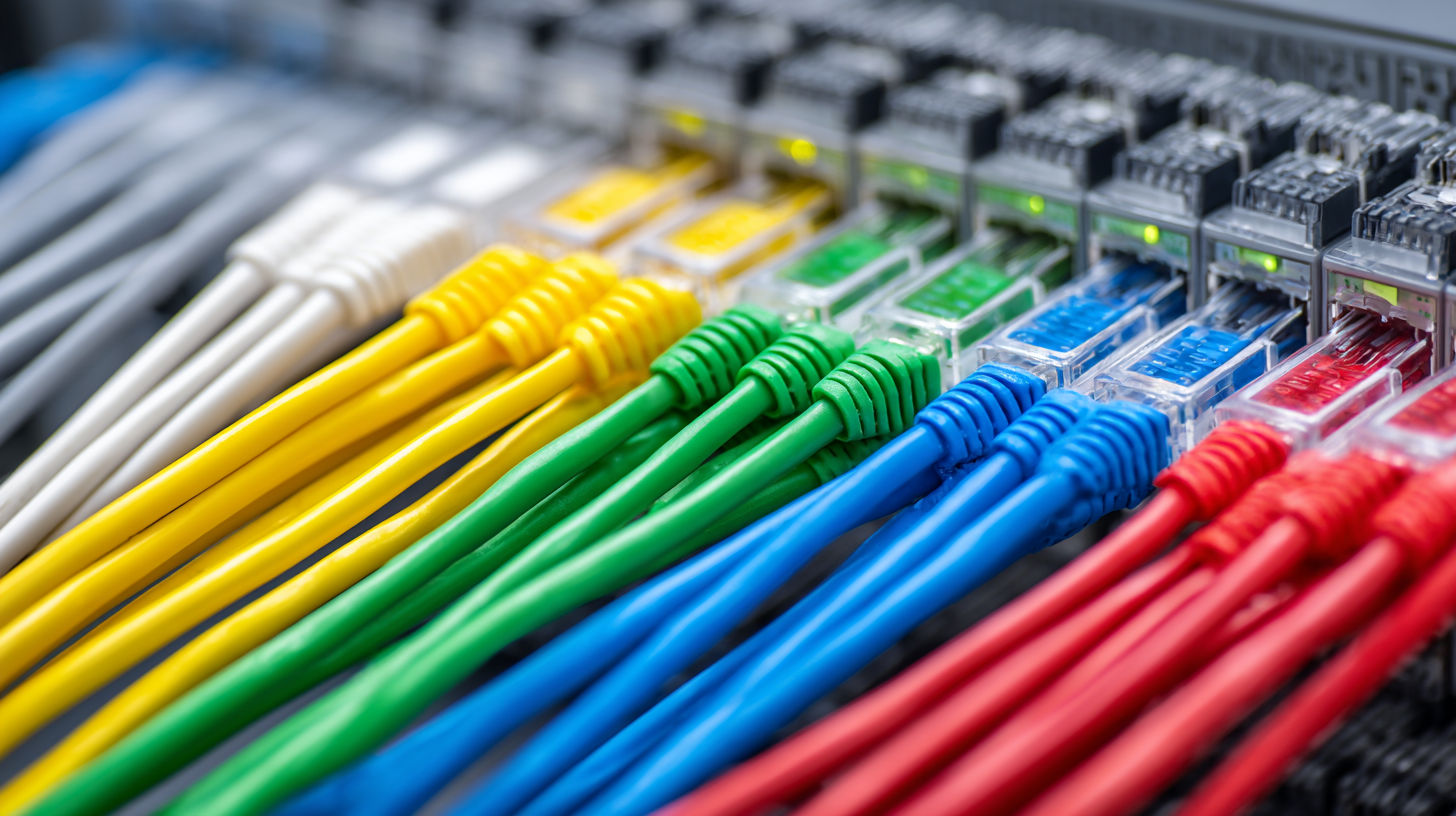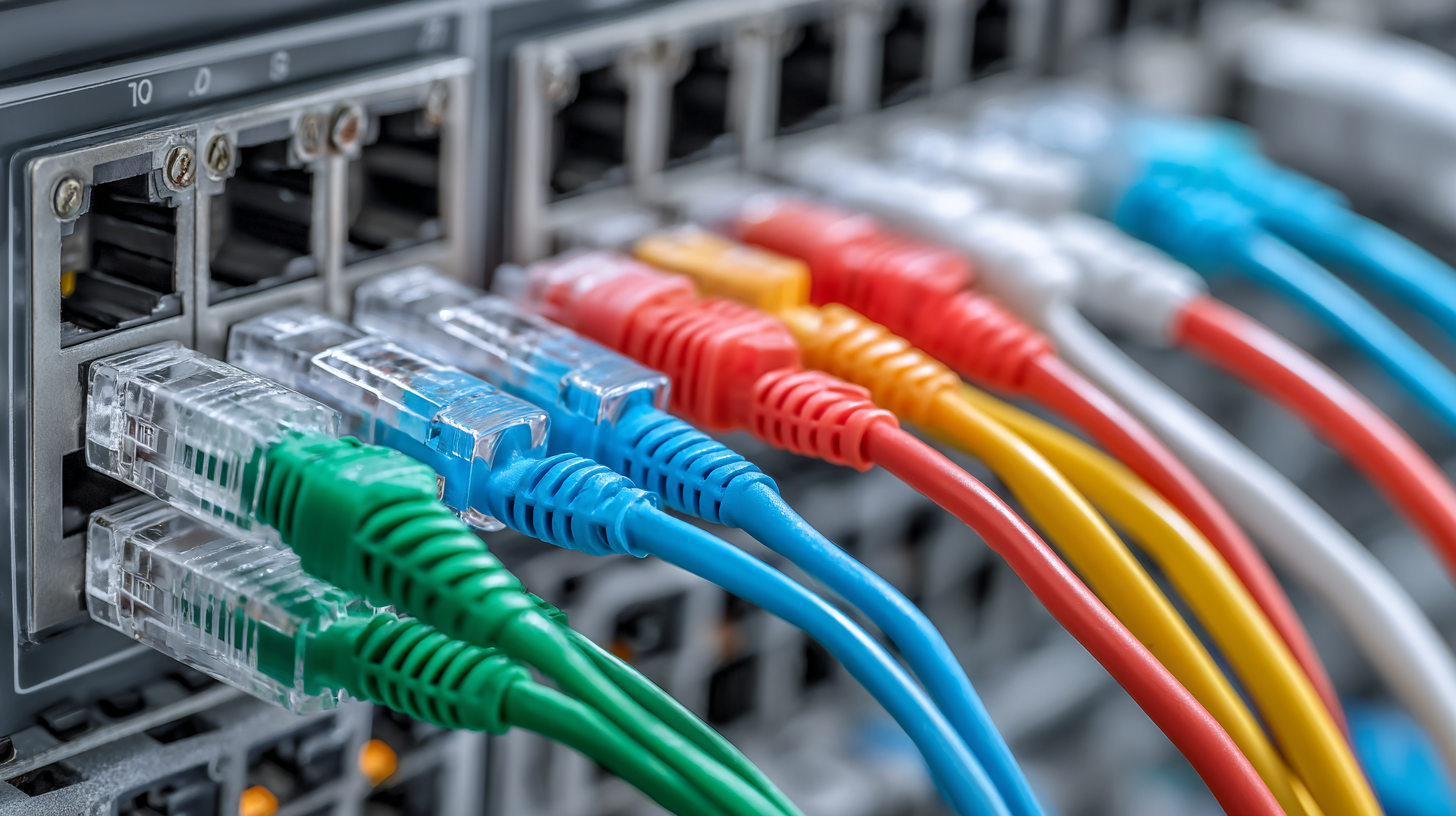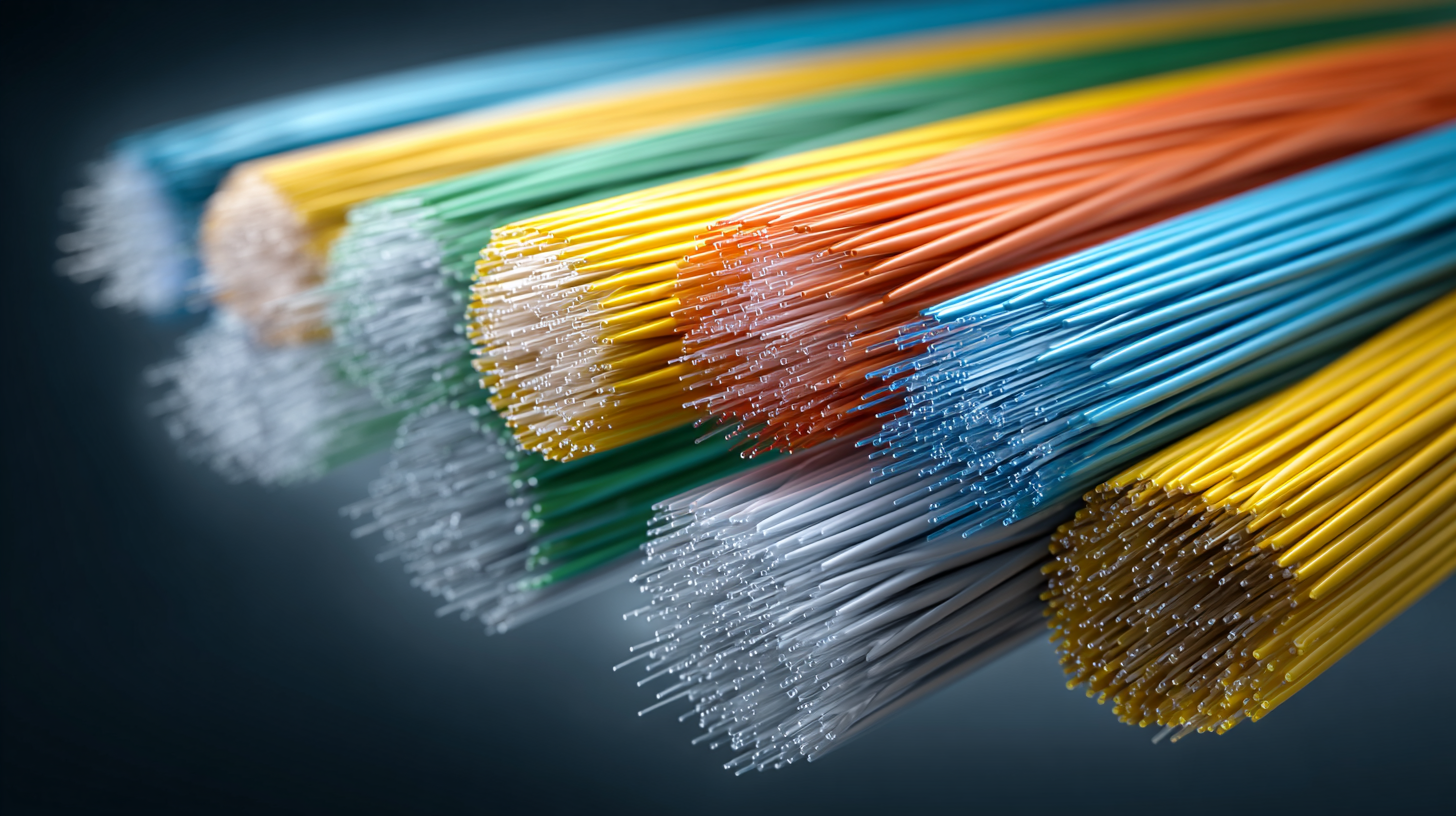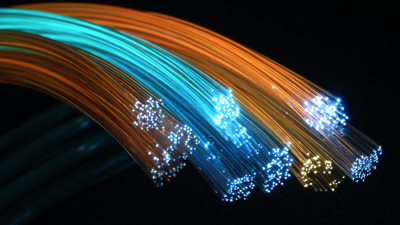What is a Fiber Optic Patch Cord and How Does It Improve Connectivity
In the ever-evolving world of telecommunications, connectivity is paramount, and one of the unsung heroes behind robust and reliable connections is the fiber optic patch cord. This essential component plays a critical role in linking various devices and networks, ensuring data is transmitted at astonishing speeds with minimal loss. Unlike traditional copper cables, fiber optic patch cords utilize light to transmit information, making them an ideal choice for high-bandwidth applications and long-distance communication. In this blog, we will delve into what a fiber optic patch cord is, how it operates, and the significant ways it can enhance connectivity in both residential and industrial settings.

From improved speed to enhanced durability, understanding the advantages of these cables will empower you to make informed decisions for your networking needs.
Understanding Fiber Optic Patch Cords: Definition and Functionality
Fiber optic patch cords play a crucial role in modern network connectivity, serving as the link between optical devices and network infrastructure. A fiber optic patch cord is essentially a thin, flexible cable made of glass or plastic fibers that transmit data as light signals. According to a report by MarketsandMarkets, the global fiber optic patch cord market is projected to reach $1.78 billion by 2023, indicating a growing demand for high-speed data transmission in various applications, including telecommunications, data centers, and enterprise networks.
The functionality of fiber optic patch cords is rooted in their ability to support high bandwidth and long-distance data transmission with minimal loss. Unlike traditional copper cables, which suffer from signal degradation over distance, fiber optic cables can maintain signal integrity over runs exceeding several kilometers. The International Telecommunication Union (ITU) has highlighted that fiber optics can transmit data rates up to 400 Gbps, making them essential for meeting the increasing demands of bandwidth usage. As businesses continue to adapt to the digital age, understanding the importance of fiber optic patch cords is crucial for improving connectivity and ensuring reliable communication systems.
What is a Fiber Optic Patch Cord and How Does It Improve Connectivity
| Feature | Description | Benefits |
|---|---|---|
| Type | Single-mode and Multi-mode | Supports different ranges and applications |
| Connectors | LC, SC, ST, MTP/MPO | Compatibility with various devices |
| Length Options | From 1 meter to over 100 meters | Flexibility for different setups |
| Loss Rate | Low insertion loss | Improves signal quality over distances |
| Applications | Data centers, telecom, local area networks | Enhanced data transmission rates |
Key Components of Fiber Optic Patch Cords and Their Construction Materials
Fiber optic patch cords are essential components in modern telecommunications, playing a crucial role in enhancing connectivity. These cords typically consist of several key components, including the optical fibers themselves, connectors, and protective sheaths. The optical fibers, made from glass or plastic, are responsible for transmitting data as light signals, which allows for higher bandwidths and faster data transfer compared to traditional copper cables. According to the Optical Fiber Industry Association, the global fiber optic market is projected to grow at a CAGR of 10.8%, reaching $29 billion by 2026, highlighting the increasing reliance on fiber technology.

The construction materials of fiber optic patch cords are vital for their performance and durability. Most commonly, these cords utilize silica glass fibers due to their superior light transmission properties, while connectors are often made from precision-engineered plastic or metal to ensure a secure and low-loss connection. Furthermore, the outer sheath is typically composed of polyvinyl chloride (PVC) or low-smoke zero-halogen (LSZH) material, providing both protection and safety in various environments. A study by MarketsandMarkets indicates that the demand for LSZH cables is on the rise, driven by increased safety regulations and awareness regarding environmental sustainability in cabling solutions. This evolution in the materials used for fiber optic patch cords not only enhances performance but also contributes to safer installations in commercial and residential applications.
The Role of Fiber Optic Patch Cords in High-Speed Internet Infrastructure
Fiber optic patch cords are essential components in high-speed internet infrastructure, connecting various network devices while ensuring minimal signal loss and maximum data transfer rates. These cords utilize light signals transmitted through glass or plastic fibers, allowing for significantly faster communication compared to traditional copper cables. As demand for faster internet speeds continues to grow due to streaming, online gaming, and cloud computing, fiber optic patch cords play a critical role in meeting these needs.
When choosing fiber optic patch cords, it's crucial to consider factors such as length, connector type, and the specific network requirements. For optimal performance, always ensure the patch cords are compatible with your existing hardware. Additionally, maintaining proper bend radius during installation can prevent damage to the fibers and maintain signal quality.
Another tip is to keep your fiber optic patch cords organized and clearly labeled. Proper management not only helps in troubleshooting potential connectivity issues but also improves overall network efficiency. By investing in high-quality fiber optic patch cords, users can facilitate enhanced connectivity and support the ever-evolving landscape of high-speed internet.

Comparative Study: Fiber Optic Patch Cords vs. Traditional Copper Cables
In the debate between fiber optic patch cords and traditional copper cables, 2023 has shown an unmistakable trend favoring fiber optics in terms of performance and cost efficiency. Fiber optic patch cords utilize light to transmit data, allowing for significantly higher bandwidth and faster speeds compared to their copper counterparts. This capacity for data transmission is particularly crucial in today's world, where streaming, cloud computing, and remote work demand robust connectivity solutions.
Moreover, studies reveal that implementing fiber optics can lead to substantial cost savings for enterprises. A recent study highlighted that Passive Optical LAN (POL), a technology leveraging fiber optics, can provide up to 56 percent savings in both capital and operational expenditures when compared to traditional enterprise networks. The enhanced reliability and reduced signal degradation of fiber optics further cement their role as the superior medium for modern telecommunications. As businesses continue to adapt to the evolving technological landscape, the preference for fiber optic solutions becomes increasingly apparent, making it clear that the future of connectivity lies in fiber optics.
Best Practices for Selecting and Maintaining Fiber Optic Patch Cords in Networking
Fiber optic patch cords are essential components that enhance connectivity in networking environments. These cords facilitate high-speed data transmission and are critical for ensuring reliable communication between various devices. However, to maximize their effectiveness, it's vital to select and maintain them properly.
When choosing fiber optic patch cords, consider the type of fiber suited for your network, whether single-mode or multi-mode, as each serves different applications. Additionally, pay attention to the cord’s length; excessive length can lead to signal loss, while too short may limit connectivity. You should also assess the quality of the connectors, as poor connectors can compromise your network's performance.
For maintaining fiber optic patch cords, regular inspections are crucial. Ensure that connectors are clean and free from dust, as contamination can significantly impair signal quality. It's also advisable to store these cords in a way that prevents kinks or bends, as physical stress can damage the fibers inside. Implementing these practices can enhance the performance of your networking setup and contribute to smarter building management solutions, particularly as AI continues to evolve in optimizing system performance and predicting maintenance needs.
Fiber Optic Patch Cord Connectivity Analysis
This bar chart represents key performance metrics of fiber optic patch cords, highlighting the advantages of single-mode and multi-mode fibers, as well as factors like length, connector types, and insertion loss. These metrics are crucial for improving connectivity in networking environments.
Related Posts
-

What is the Importance of Network Fiber Optic Cable in Modern Communication
-

Innovative Solutions for Optimizing Enterprise Networking Efficiency
-

10 Amazing Benefits of Using Network Patch Cables for Your Business
-

How to Choose the Right UTP Cat 6 Cables for Your Network Needs
-

7 Digital Strategies to Optimize Your Network Cable Installation for Peak Performance
-

10 Reasons Why Cat 6 Bulk Cable is Essential for Your Network Installation
